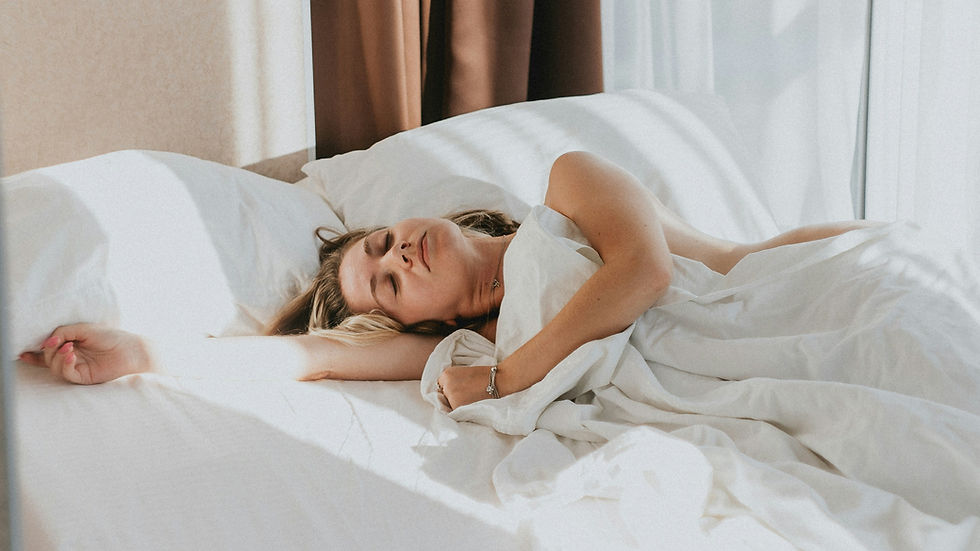why its bad sleeping with wet hair
- patricia
- Jul 2
- 6 min read
Updated: 4 days ago
There Are Dangers to Sleeping With Wet Hair: What You Need to Know

One of the most googled hair questions worldwide is whether sleeping with wet hair is harmful to your hair and health. This seemingly simple question has sparked countless debates, old wives' tales, and conflicting advice across beauty forums and social media platforms. As hair care professionals, we're here to provide you with the complete, science-backed truth about what really happens when you go to bed with damp or wet hair.
People frequently search for "what happens if you sleep with wet hair," "sleeping with wet hair myth," and "can sleeping with wet hair cause baldness." They seek definitive answers. Whether you're wondering "does sleeping with wet hair make you sick," "sleeping with wet hair breakage," or "why you shouldn't sleep with wet hair," this comprehensive guide addresses every concern about nighttime hair care routines and wet hair dangers.
The short answer is yes, sleeping with wet hair can be problematic for multiple reasons. However, the reality is more nuanced than you might expect. Understanding the science behind wet hair, health, and sleep hygiene will help you make informed decisions about your nighttime hair care routine, protecting your hair from unnecessary damage.
The Science Behind Wet Hair and Sleep Damage

When hair is wet, it becomes significantly more vulnerable to damage due to changes in its molecular structure. Hair strands are composed primarily of a protein called keratin, which forms strong bonds that give hair its strength and elasticity. When hair absorbs water, these protein bonds temporarily weaken, making individual strands up to 30% more fragile than when completely dry.
This scientific explanation addresses searches for "why is wet hair more fragile" and "wet hair weakness causes." Understanding "hair cuticle damage from sleeping wet" helps explain why dermatologists consistently advise against sleeping with wet hair.
The increased fragility means that the friction created during sleep—when your head moves against pillows and bedding—can cause microscopic damage to the hair cuticle. The cuticle is the outermost protective layer of each hair strand, consisting of overlapping scales that lay flat when hair is healthy. Wet hair cuticles become raised and more susceptible to catching on fabric fibers, leading to roughening, breakage, and split ends.
Water trapped against the scalp creates an ideal environment for bacterial and fungal growth. The warm, moist conditions between wet hair and pillows can promote conditions such as dandruff, seborrheic dermatitis, and fungal infections. These not only cause discomfort but can also impact overall scalp health.
Physical Damage Risks of Sleeping With Wet Hair Overnight

The physical damage caused by sleeping on wet hair extends far beyond simple breakage. Mechanical breakage represents the most immediate concern when sleeping with wet hair. As you move during sleep, wet hair strands rub against cotton pillowcases, creating friction that gradually wears down the hair cuticle.
Tangling becomes worse with wet hair because raised cuticles catch on each other more easily. Split ends develop more rapidly when sleeping with wet hair because the weakened hair shaft is more likely to split under pressure.
Hair elasticity changes permanently when wet hair is repeatedly stretched during sleep. This stretching can cause the hair cortex, the middle layer responsible for hair strength, to develop microscopic tears that accumulate over time. Hair with compromised cortex integrity appears dull and feels weak.
The weight of wet hair creates additional stress on hair follicles. Some people may even experience hair loss if they are predisposed to thinning hair.
Scalp Health Implications and Wet Hair Consequences

Your scalp health significantly impacts hair growth and quality. Sleeping with wet hair creates scalp-related problems that can have lasting effects on your hair health.
Fungal infections thrive in warm, moist environments, making wet hair an ideal breeding ground. Malassezia, the fungus responsible for dandruff, proliferates rapidly in these conditions. This can lead to increased flaking and itching, disrupting normal hair growth cycles.
Seborrheic dermatitis often worsens when the scalp remains damp for extended periods. Folliculitis, inflammation of hair follicles, can develop when bacteria multiply in the moist environment created by wet hair against pillows, causing small, red bumps.
Health Concerns Beyond Hair Damage From Wet Sleep

Sleeping with wet hair affects more than just your hair and scalp health. Several broader health implications make this practice potentially problematic for your overall wellbeing.
Temperature regulation becomes compromised when you sleep with wet hair. Your body naturally drops its core temperature during sleep. Wet hair can interfere with this process, potentially disrupting sleep quality.
Respiratory issues may arise for individuals prone to allergies. Damp pillows can harbor dust mites and mould spores, further irritating sensitive systems.
Hygiene concerns extend beyond personal cleanliness to impact your sleep environment. Wet hair transfers moisture to bedding, creating conditions where bacteria can thrive.
Hair Type Specific Considerations for Wet Sleep

Different hair types experience varying degrees of problems when sleeping wet. Fine hair suffers the most damage because it is naturally more fragile. Curly hair faces unique challenges as the curl pattern traps moisture longer than straight hair.
Chemically treated hair—including coloured, permed, or relaxed hair—becomes extremely vulnerable when wet. Coiled hair types are also more fragile due to the frequent direction changes along the hair shaft.
Proper Hair Drying Techniques Before Bedtime

Understanding how to properly dry your hair before bed is crucial for maintaining hair health. Common searches include "how to dry hair quickly before bed" and "fast hair drying methods."
Air drying is the gentlest method for hair health. Start the process immediately after washing by gently squeezing excess water from hair using a microfiber towel. Section damp hair and gently comb through with a wide tooth comb to prevent tangles.
Heat styling tools can expedite the drying process. Use a blow dryer on the cool or low heat setting. Microfiber towels significantly reduce drying time while minimizing damage.
Safe Nighttime Hair Care Routines and Protective Styling

Developing a comprehensive nighttime hair care routine protects your hair while accommodating real-world scheduling constraints. Planning ahead makes all the difference in maintaining healthy nighttime hair practices.
Protective styling becomes essential when you must sleep with slightly damp hair. Loose braids and silk scrunchies create barriers between hair and pillowcases while minimizing tension.
Silk and satin pillowcases dramatically reduce friction. While initially more expensive than cotton, they pay for themselves through reduced hair damage and improved health.
Emergency Solutions for Wet Hair Situations and Quick Fixes

Life doesn't always allow for perfect hair care timing. Having emergency strategies can minimize damage during these unavoidable situations.
Quick drying methods can remove enough moisture to make sleeping safer for your hair health. Protecting hair using strategic wrapping techniques can absorb excess moisture while preventing direct contact with bedding.
Long-Term Hair Health Strategies and Prevention Methods

Maintaining healthy hair requires consistent, long-term practices. Understanding how daily habits accumulate informs better choices.
Regular deep conditioning treatments become essential for repairing any damage caused by occasional wet sleeping or environmental stressors. Scalp care routines promote healthy hair growth and prevent issues related to poor nighttime practices.
Conclusion: Best Practices for Healthy Hair and Sleep

Sleeping with wet hair presents multiple risks to both hair health and overall wellbeing. Understanding that perfection isn't always realistic helps in developing strategies for minimizing damage during unavoidable wet hair situations.
Your hair health journey involves daily decisions that accumulate over time. By prioritizing proper drying techniques and investing in quality sleep accessories, you can maintain beautiful hair while getting necessary rest.
For those interested in tightening their routines, people searching fo "lifelong hair health strategies," and "hair care best practices" seek holistic approaches that address all aspects of hair health, from daily care routines to sleep habits.








